Minister for Agriculture Mary-Anne Thomas said 21 organisations would receive a Pet Desexing Grant under Round One of the $1.5 million program, including the City of Port Phillip and the Bendigo Animal Relief Centre. The grants could see more than 4,000 cats and 650 dogs desexed.
“These grants will ensure Victoria’s most vulnerable pet owners can access free or low-cost desexing and help limit the numbers of unwanted cats and dogs in shelters across the state,” said Ms Thomas. “The funding is an important step to support councils and not-for-profit organisations to provide critical desexing services and improve animal welfare outcomes for our much-loved pets.”
As part of the $500,000 offered in Round One, the City of Port Phillip has been awarded $47,521 to establish the Pets of Port Phillip Clinic, which will offer free desexing services for an estimated 225 cats and dogs owned by disadvantaged people living in public housing estates in the area.
City of Port Phillip Mayor Louise Crawford said, “This grant means we can assist more than 200 residents living in public housing by providing free desexing, vaccination and microchipping for their dogs and cats at the Pets of Port Phillip Clinic.”
A $15,725 grant will support the Bendigo Animal Relief Centre to deliver the Bendigo Community Cat Program which will desex, vaccinate, microchip and register 50 cats whose owners are low-income earners.
Bendigo Animal Rescue Centre Operations Manager Fra Atyeo said, “Through the Bendigo Community Cat Program we are aiming to provide an affordable service to residents that will increase the number of micro-chipped, desexed, and registered cats in the community.”
Pet Desexing Grants are funded through the Animal Welfare Fund Grants Program and will provide $1.5 million over three years to support councils and not-for-profit organisations that provide free or low-cost desexing of cats and dogs for disadvantaged members of our community.
Since the Animal Welfare Fund Grants Program was launched in 2012, 169 grants have been awarded to not-for profit and community organisations, totalling almost $4.2 million, to improve responsible animal ownership and provide better welfare services for companion animals in the community.
For more information on the program
A study by new Australian dog supplement brand ZamiPet finally uncovers an undeniable link between the health of our dogs and our own mental health, finding that when our furry friends aren’t feeling well, we feel out of sorts ourselves, and we want to help.
In research that polled 1,000 Australians, dog owners spoke of how they see their pets as family members and get great comfort from their presence in their lives. Almost all respondents said their dog makes them happier (95 per cent) and healthier (93 per cent), while 94 per cent said their dog supports their overall mental health.
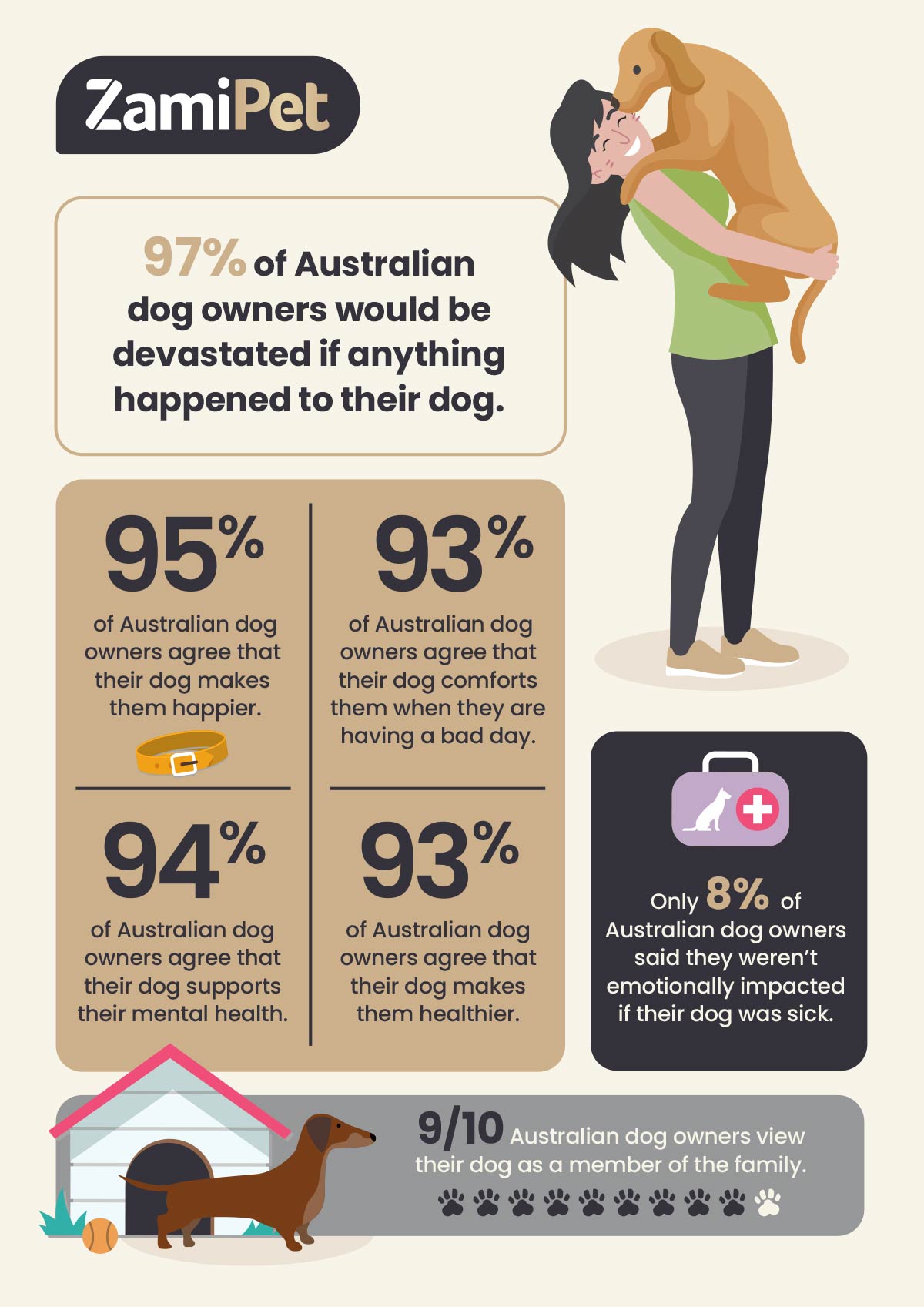
Nine out of 10 said they’d be devastated if anything happened to their dog, with the same amount of people also commenting that their heart breaks when their dog is unwell. Only eight per cent of people said they weren’t emotionally impacted if their dog was sick.
Dr Andrew McKay, Australian veterinary surgeon and head vet at ZamiPet, said there is no denying that happy pets meant happy humans, but that few pet owners understood the link between happiness and health when it came to their pets.
“Many of us have experienced the stress and upset of a sick or injured pet – it impacts our mood, our mental health and our happiness. This research confirms what pet lovers have always known – our health and happiness are heavily influenced by our pet’s own health and happiness,” he said.
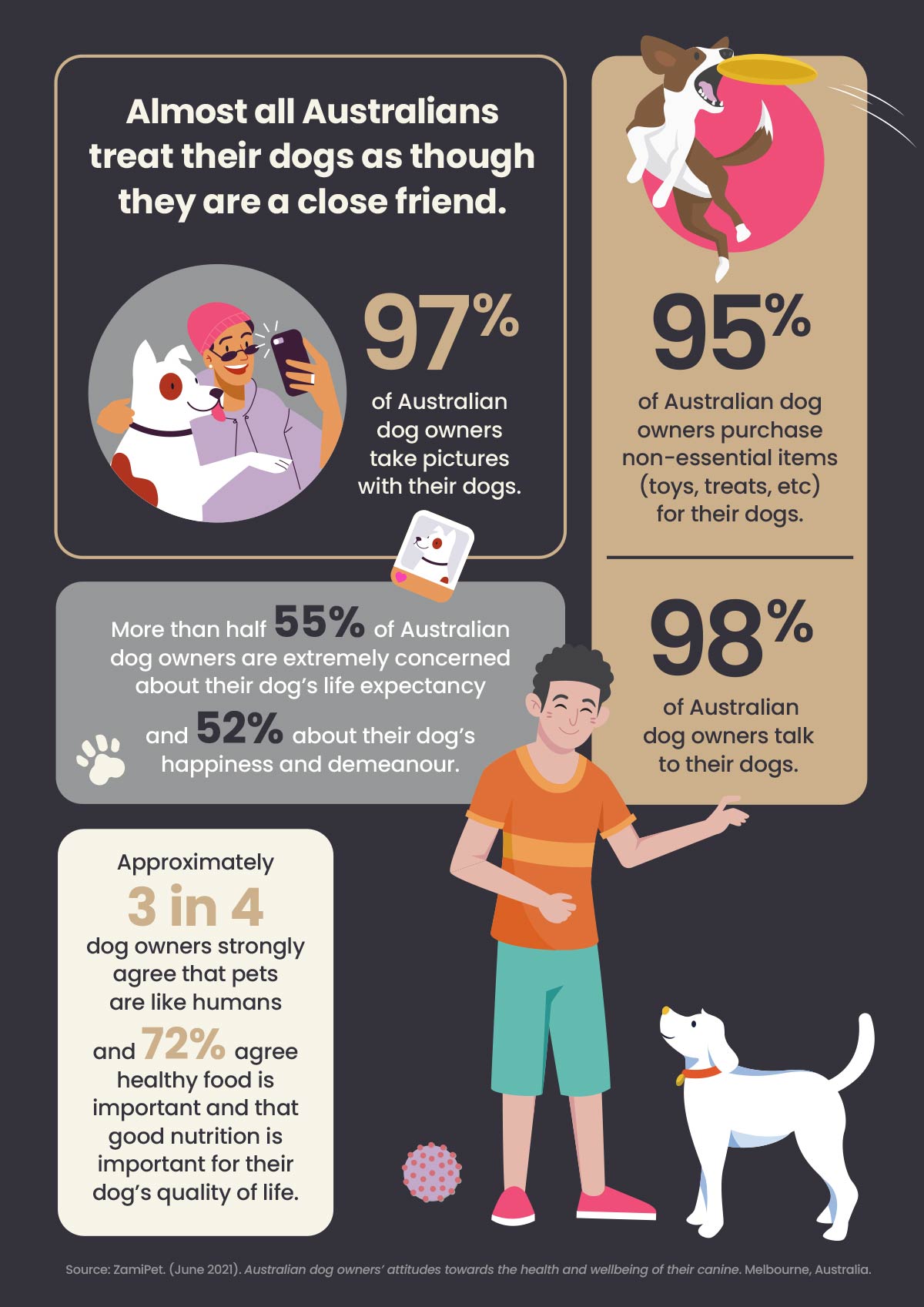
The ZamiPet study also delved into attitudes towards dog ownership, finding that 93 per cent of Australian dog owners view their pet as a member of their family and almost all treat their dogs as though they are a close friend. In fact, 98 per cent of Aussie dog owners talk to their dogs, 97 per cent take pictures with their dogs and 94 per cent purchase items like toys and treats for their dogs.
Australian dog owners have also used a video monitor to track the movement of their dogs when they’re not at home (79 per cent), celebrated their dog’s birthday (65 per cent) and more than half have purchased fashion accessories for their dog (53 per cent) – confirming the utter joy our much-loved companions add to our livelihoods and the unconditional love we have for our pets.
Credit: ZamiPet
In the past two weeks a small number of Lort Smith pet therapy dogs started visiting the hard working staff at the Peter MacCallum Cancer Centre.
Lort Smith Head of Hospital, Dr David Cunliffe said, “Staff at the Peter Mac, like so many other hospitals across Melbourne, are in need of support at this time. So, when a call came to Lort Smith from our friends at Peter Mac with concerns about the impact of the latest COVID-19 outbreak on their frontline healthcare workers, our pet therapy volunteers responded with a resounding “YES’’ to coming back to visit staff.
“We have a strong, positive partnership with Peter Mac staff, who see first-hand the incredible impact a dog’s presence can have on people experiencing acute distress, pain, and trauma. The staff go above and beyond to support our visiting volunteers and to provide the opportunity for people to benefit from the human-animal bond.”
Although the Lort Smith Pet Therapy program began over 32 years ago as part of the community outreach services, it was originally designed for patients and residents in hospitals, aged care and juvenile justice facilities.
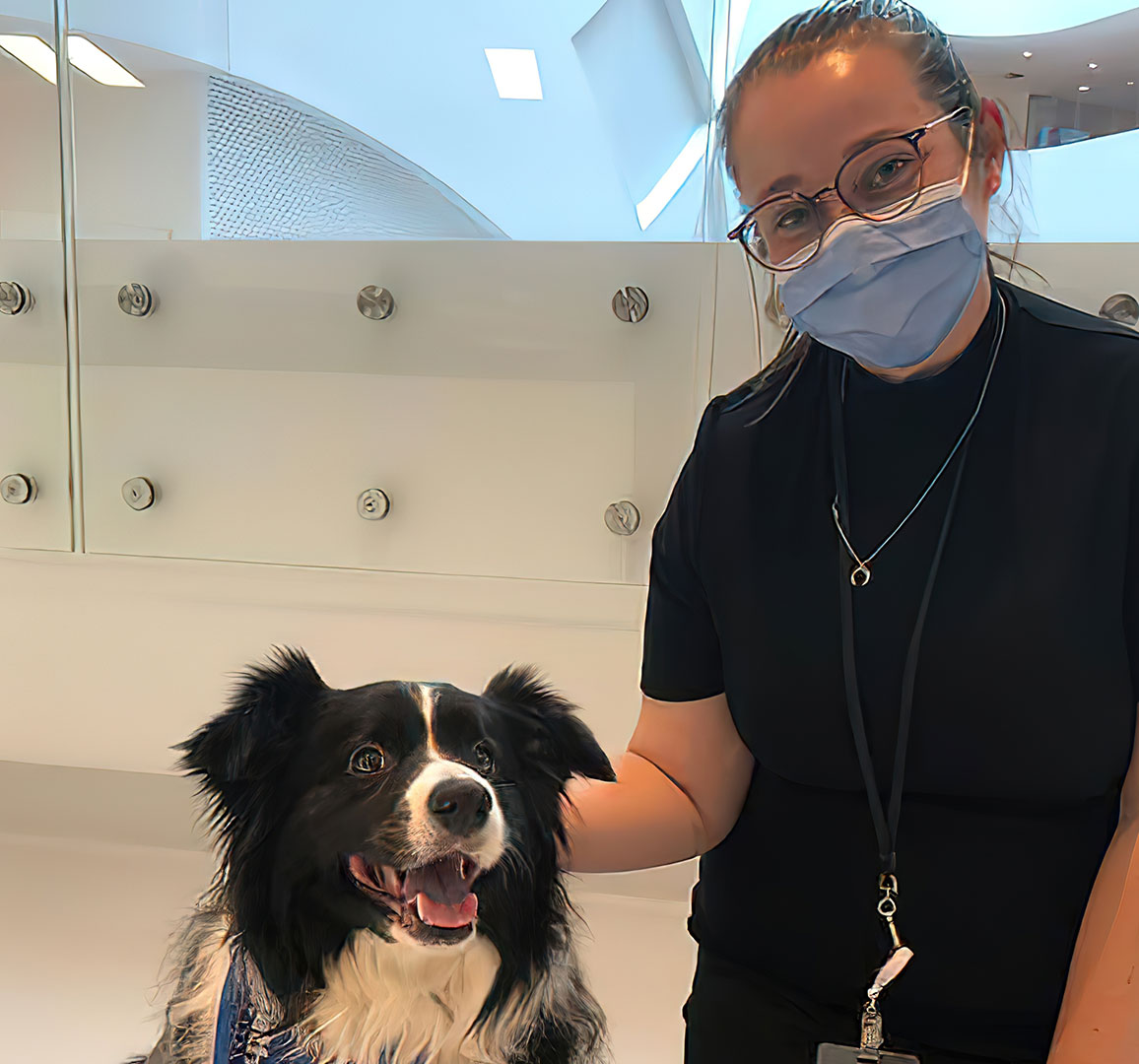
However, due to COVID-19, the volunteer pet therapy teams have been unable to visit the high-risk, vulnerable groups and instead there has been a strong interest for pet therapy services as a support for healthcare workers.
“In non-COVID times, these incredible dogs from Lort Smith are a common sight in our inpatient wards,” said Peter Mac’s Chief Nursing Officer, Jac Mathieson.
“They always bring a smile to the faces of our patients and their visitors, and of course our staff. A massive thank you to Lort Smith for everything you are doing to support wellbeing at Peter Mac.”
Pet therapy is used in defence and first responder industries being recognised as an established measure for helping employers manage workplace stress and support mental health and wellbeing.
Lort Smith is an iconic Melbourne institution serving the community for 85 years and is the busiest not for-profit animal hospital in Australia, seeing around 25,000 animals each year.
Animal health industry leader Animal Medicines Australia (AMA) has published a new study, Pets and the Pandemic, that sheds light on how the pandemic has changed our relationships with our pets and the people who help care for them.
As the report reveals pet ownership at record levels, the AMA urges policy makers to consider the needs of companion animals and their owners.
“This should range from rental, strata and body corporate regulations to animals in public places, transport access and holiday accommodation,” says Lance Williams, AMA President.
In the Pets and the Pandemic report, the research indicates the COVID-19 pandemic restrictions may have created an opportunity for Australians to introduce a previously desired pet into the family, rather than the pandemic being the reason itself for acquiring a pet. For instance, working from home arrangements have provided the opportunity to spend time with a young pet.
The research also reveals that the early anecdotal reports accurately reflect the biggest boom Australia has seen in pet ownership. In a time of significant uncertainty and reduced social interaction, Aussies have turned to pet ownership as a source of comfort and joy.
This report, a supplement to Animal Medicines Australia’s triennial report, includes overall pet population data as well as information specifically focused on cats and dogs based on a quantitative survey and qualitative research.
Owners said that pets had a positive impact on their lives throughout the pandemic because they provided joy, comfort and were good for mental health. The smaller number of negative experiences reported were associated with things like restricted walking times, worrying that their pet could catch COVID-19 or having their pet pass away.
The pandemic also showed that pet animal welfare must be explicitly protected as an essential service/activity.
“Our pets bring so much love and joy to our lives; it is our responsibility in turn to provide them with the best health, care and environment we possibly can,” says Mr Williams.
Download the full report here.
Due to open later this year, Lort Smith Animal Hospital – Campbellfield Centre will be the new community veterinary centre on Berwick Road, Campbellfield and will build on Lort Smith’s iconic legacy to provide animals with affordable, high-quality vet care to those in and around Melbourne’s north.
The Campbellfield Centre will include a vet clinic, improved adoption centre facilities and a community dog park. This second site at Campbellfield represents the growth of the organisation and demand for services across the community.
Building efforts will then focus on their existing site in North Melbourne where they will be staying with new and improved facilities, an expansion of their emergency and surgical services, and provision for more complex veterinary care.
The developments have been made possible thanks to the generosity of donors, bequestors and supporters who give to the organisation, supporting Lort Smith’s Capital Campaign.
To help Victorians take action against poor breeding practices during COVID-19, the community legal centre established the Anti-Puppy Farm Legal Clinic for free legal advice.
Erin Germantis, a lawyer with ALI, said throughout the pandemic many people have welcomed new companion animals such as dogs and cats into their home. With this rising demand for pets, breeders may increase their churn and charge exorbitant prices to make a quick profit. They may even do so even at the expense of an animal’s health, or the health of the animal’s offspring.
“Too often, people unknowingly bring home animals with underlying health conditions that the breeder did not disclose before the sale. The buyer is then left to foot the bill for veterinary treatment to help their pet recover,” she said.
Helping Victorians and their pets
The Anti-Puppy Farm Legal Clinic is providing free preliminary legal advice to Victorians who have purchased sick pets from breeders.
For example, people in this situation may have a legal right under the Australian Consumer Law to obtain a refund of their purchase price; reimbursement of past and/or future veterinary expenses; or an exchange of the animal.
Obtaining legal advice is the first step in understanding your rights, obligations and options under the law.
Book an appointment today to speak with a lawyer about your rights or to learn more about the clinic: www.ali.org.au/antipuppyfarmlegalclinic
The Animal Law Institute is a registered charity and community legal centre. If you would like to support their work, please visit www.givenow.com.au/ali
Photo credit: Erin Germantis on behalf of The Animal Law Institute
Founded in 2003, SAFE has saved more than 30,000 animals across the state, including every re-homable animal offered by the Karratha City's Ranger Services and the community. SAFE Karratha's veterinary charges alone for the last financial year were $95,000.
City of Karratha provides financial support with an annual lump sum contribution of $65,000. Due to the lack of funds there are only 2 paid positions across all 11 branches. SAFE's work is supported by volunteers, including its founder, Sue Hedley OAM.
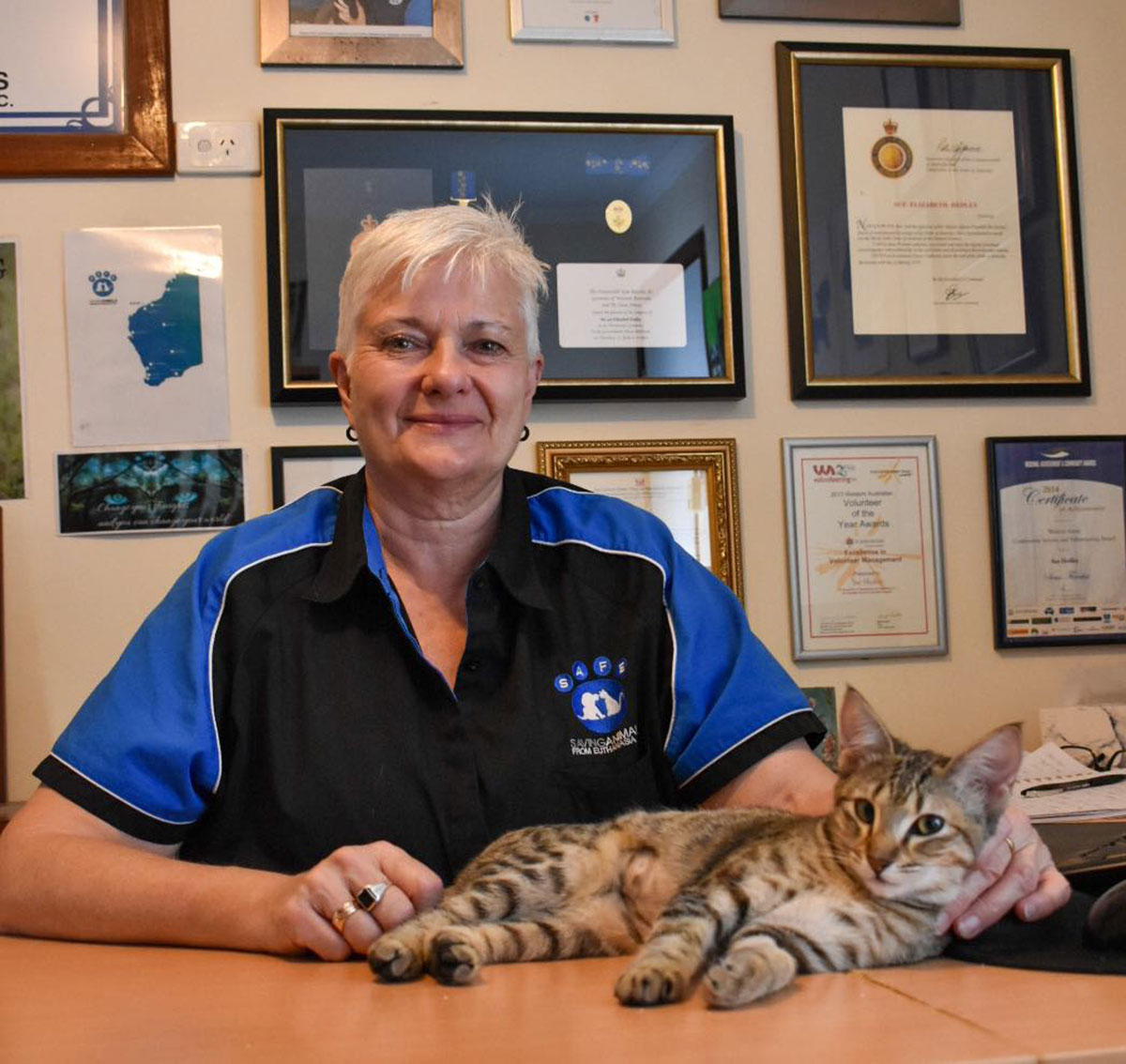
However, SAFE does not have anywhere near enough volunteers to help in the day-to-day operations and to ensure its sustainability, the charity needs the basic wage of one employee paid as a minimum, as well as a per animal contribution for those animals referred to SAFE from Council's Ranger Services in each Branch.
"If SAFE were no longer able to operate, the ramifications would be devastating, not only to the animals needing to be saved, but also to the entire community," explained Sue.
"Prior to SAFE's inception, homeless animals were frequently destroyed and disposed of by the Council. If we closed, vets and rangers would be having to euthanise healthy, re-homable animals, something that no one has had to cope with since SAFE's inception."
CANA applauds the move by Karratha Council to provide funding and service fees to SAFE Karratha to re-home animals.
"It is great Karratha City Council are supporting our vital work, however SAFE also operates out of Avon Valley, Broome, Bunbury, Busselton, Carnarvon, Esperance , Goldfields, Hedland, Metro- Perth and Newman where they receive no support from councils for doing the same work," said Trish Ennis, National Executive of CANA.
"We encourage other local governments to consider following the innovative and life saving ideas of City of Karratha."
Spending time with animals is a research-backed way to lower stress and anxiety. And yet, you don’t need to own a pet to reap the stress-reducing benefits. If pet adoption isn’t an option for you, you can still find comfort in visiting a friend’s pet, visiting the dog park on your lunch break, or taking a trip to a petting zoo over the weekend. There are three reasons why pets can help us cope with stress.
Desexing cats before four months old is on the increase. New research finds Australia is doing well in the desexing arena. But the age of desexing needs to be brought forward from six months to four months to close a "pregnancy gap" and prevent unwanted litters of kittens.
Read full article at The University of Sydney
The most common signs of separation anxiety include:
- digging
- chewing
- scratching at doors or windows
- howling
- barking and crying
- urination and defecation (even house-trained dogs).
Why do dogs suffer separation anxiety?
The reasons for separation anxiety are not fully known. Some dogs suffer this condition while others do not. It is important to realise that the dog has a behavioural condition and is not punishing the carer for leaving. Destructive behaviour and soiling the house are a response to panic, and many dogs that are brought into shelters suffer this condition.
When does separation anxiety occur?
- When a dog is accustomed to constant human contact and companionship, and is suddenly left at home alone for the first time
- Following a long interval such as a vacation where the carer and dog were constantly together
- After a period spent in a shelter
- After a change in the family’s routine or new house/environment
- When a new pet or person moves in.
How do I know if my dog has separation anxiety?
- The behaviour occurs primarily when the dog is left alone
- The dog follows you from room to room whenever you’re at home
- They display frantic greeting behaviours
- The behaviour always occurs when they are left alone regardless of length of time
- The dog reacts with excitement, depression or anxiety to your preparations to leave the house
- They dislike spending time outside alone
Training your dog to become independent
- When you first bring your dog home it is important to spend time showing them the rules of the house. But it is equally important to teach them that spending time alone is also enjoyable.
- Start with short time periods and give them food, toys, bones or food dispensing toys to chew and play with. Make being alone fun and positive, and before they even realise they were alone you can come back. Start increasing this time period so even when the dog has finished his bone or food, he knows you will always be back.
- Make sure to not come back to the dog if the dog is whining or vocalising; only reward calm behaviour. You can do this while you watch TV or prepare dinner, making sure that at least once or twice a day your dog is separated from you and not constantly shadowing you.
- Provide your dog with a safe space. A space that is just theirs. It could be a kennel, a room, a crate or their dog bed. Place an article of your clothing that smells like you in this space.
- Using food, toys, chews, games and relaxing music you can make certain room or area a place where the dog loves to go because there are always fun, positive things happening there.
- The more you encourage your dog to go there and be alone while you’re at home, the more he’ll go there when you’re away.
- When you leave for the day keep departures as low key and boring as possible. You can say goodbye in a calm, quiet tone and leave the house like no big deal. Even if you prepare a food-dispensing toy or scatter treats you can do this without paying him too much attention.
- Make coming home especially low key. No touching, no talking, no eye contact while your dog is excited and running around. When he is calm, and when you’re ready and settled then you can ask for a ‘sit’ and give him attention.
- The more boring our presence, the less horrible being alone may seem to the dog.
- The more mentally and physically tired your dog is, the more likely he is to sleep and relax while you’re out. Take your dog for a decent walk in the morning and do some short training interludes. Before leaving, scatter some food and hide a peanut butter stuffed Kong for your dog to work on after you leave. You could consider having other people walk, feed and spend time with your dog if you are away from home for long periods.
Severe cases of separation anxiety
Use a systematic approach and practice leaving and returning:
- Begin by leaving as normal (getting car keys, grabbing your bag or coat, etc.) then sit back down. Repeat this step until your dog does not show signs of distress
- Next leave the house by stepping outside, leaving the door open, then return
- Finally step outside and close the door, then return immediately
- Proceed gradually step by step until your dog is not distressed by these steps. If anxiety occurs return to the previous step
- When your dog can tolerate you being on the other side of the door for several seconds, begin with short-term absences and return
- Make your leaving and returning low key
- If your dog shows no sign of distress gradually increase the length of time you are gone
Practice as much as possible and scatter the training throughout the day. Once your dog can handle short absences (30–90 min) they should be able to handle longer intervals.
Other methods and short-term solutions
- Teaching your dog to ‘sit’ and ‘stay’ using positive reinforcement will teach your dog that they can stay in one place while you go into the next room. When you return praise them quietly
- For interim solutions consult your veterinarian about medications that may be helpful
- Take your dog to doggy day care
- Leave your dog with a friend or neighbour that they know
- Let your neighbours know you are working on the condition if they have complained to you about it
What not to do
- Do not punish your dog. This may lead to an increase in anxiety as they are getting the attention they want
- Do not get another pet as a companion. Your dog is anxious because of the separation from you, not because of being alone
- Do not lock your dog up. Your dog will still have an anxiety response and may injure itself trying to get out

